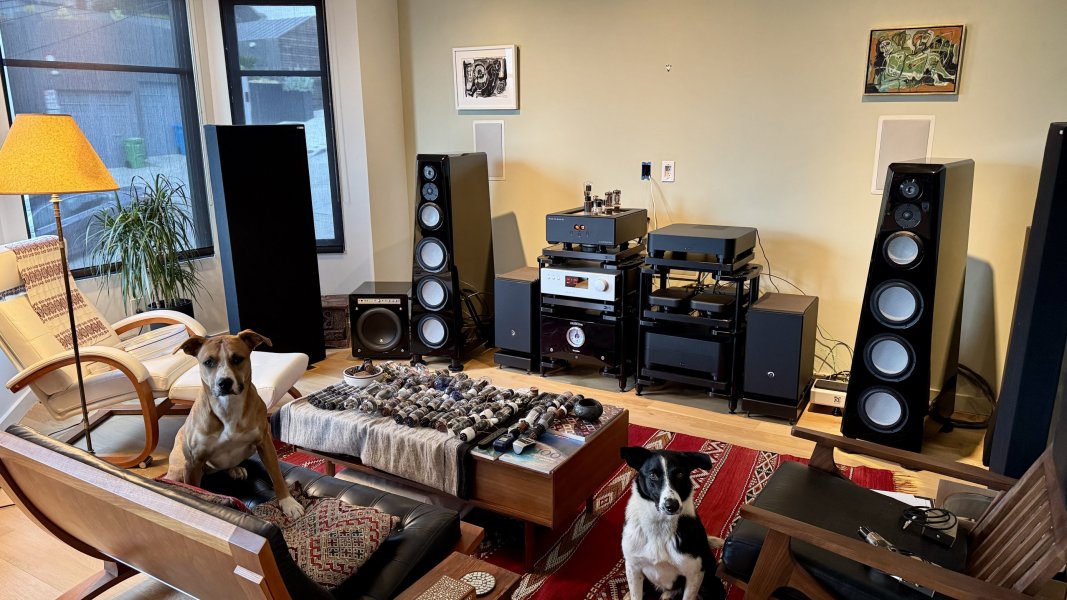quick update
(Taiko Olympus / I/O / Extreme ) here as it has been a minute...
been fortunate to have had the Olympus and I/O to listen to the past 4 to 5 months.
Been a long time user of all Taiko server and network products over the past 5 years with the Olympus and I/O replacing the Extreme most recently (quick insert: would like to say here that I have never had a single issue with the Extreme in all that time. robust like a tank. An uber computer that ran for 5 years, without a single hiccup. just my experience, without saying how other server companies are faring).
In a quick effort to try to provide a brief summary of transitioning from the Extreme to the Olympus and I/O....
Inserting the Olympus and I/O via USB to the Lampizator Horizon 360 was IMMEDIATELY transformational. The USB stage imho needed no warm up, no break in, dead cold, everything that we love that the Extreme has delivered was on steroids. It was a serious component level upgrade and I already knew the deal was done regardless of what XDMI might offer. Musical engagement, bass, tonal saturation, less digital overtones, etc etc. A number have posted extensive reviews. Going out on a limb, but based on conversations with a number of friends, the delivery from the Olympus is simply mind blowing and redefining, wiping away what we hear/ascribe as digital or streaming.
Over the past 4-5 months I have ensured full break in of the Lampizator XDMI card to the 360 and made headway on the Taiko analog card. Quick separate shout out to Von Schweikert and there incredible Ultra 7 speakers and Masterbuilt Ultra cable lines which I can't say enough about, but different thread.
As far as connecting the Olympus to the Horizon 360, I really did have to spend time, as things broke in over many weeks, appreciating the differences between USB to the 360 and the XDMI card to the 360. In a nutshell, in my system, XDMI has a slightly more laid back presentation, and this is a complement, with more natural immersive vocals, slightly wider soundstage, on par micro details, and I believe less fatiguing overall. USB adds a bit of pace and sounds a bit more digital on the margins, perhaps a little extra fuel to dynamics. Overall they are relatively close but honestly I think my hearing/appreciation is maturing as I listen to them both. One defining moment for me is that I have had moments of absolute magic, transfixed and lost in sonic bliss with XDMI to the 360. An experience I never thought possible. I am not versed to describe analog versus digital sound, but XDMI enters a territory on sonic attributes that I love but have no comparative bearing.
And then the analog XDMI card.... While incredible given what it is trying to compete against out of the gate, I have also seen what folks describe as a long transformation over hundreds of hours. I am 'only' at 350 hours and I know I need to double that amount. I am excited to hear what it can deliver (using cardas rca to xls adaptors to boot) over time, but am really quite interested in the analog version 2 xlr module in the future as many are!
Lastly, and most importantly, I would like to say thanks to
@nenon / Vassil for his constant effort to navigate the Taiko landscape, challenges and customer base with incredible passion, humility, expertise and kindness. I know many of us have experienced his unbelievable customer support, he's literally dropped 4 hours of his personal time I recall just to navigate a logistical situation, working into the night often and of course with a baby as well. Vassil man you are amazing.
Ok, seriously in sum just a pic or two attached...
View attachment 159190View attachment 159191







